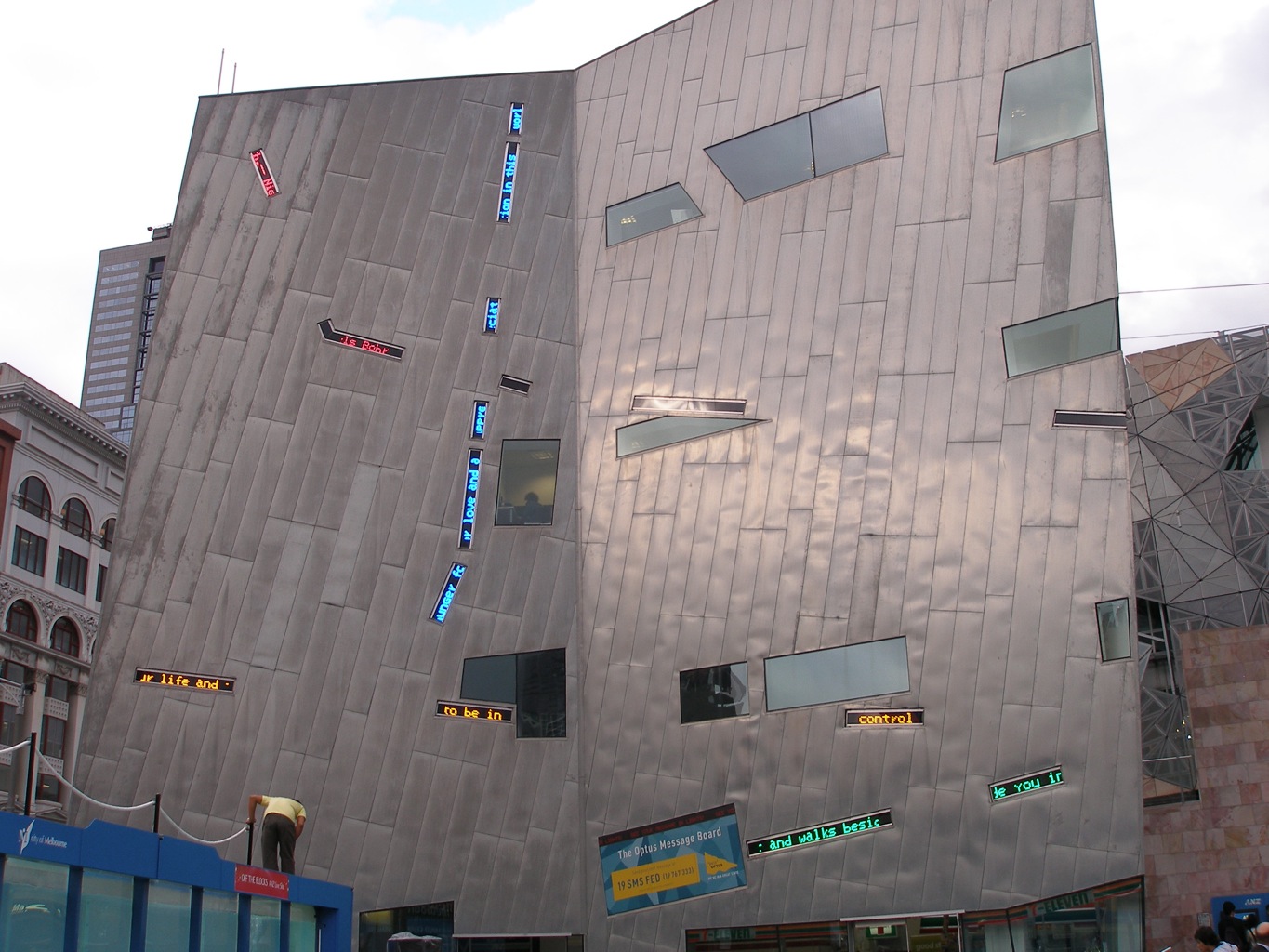This post is a quick look at integrating Twitter with public space. Microblogging and public conversation through Twitter and mobilisation through Facebook groups and causes have subsumed the traditional role of the town square as a site of rhetoric and protest - today it is much more effective to promulgate ideas and propaganda from online speaker corners.
Flashmobs,
Foursquare and
geotagging of photos are leading the reintegration of online spaces with physical landscapes, and encouraging cities to be understood to have invisible, virtual layers. Dan Hill, City of Sound, elaborates such an understanding with his narrative,
the Street as Platform.
Our exclusive focus on online spaces had been at the expense of public space. This neglect has seen further deterioration of public space following trends of automobile domination and commercialisation - issues which many cities are begging to grapple with, while others such as Canberra continue to ignore. Transport hubs such as Circular Quay in Sydney are particularly vibrant, while tourist precincts that seek spectacle such as Darling Harbour in Sydney and Federation Square in Melbourne are overtly manicured, and commercialised cafe strips and shopping malls are tightly controlled. Skateboarders are designed out of public space, loitering teenagers are chased out, the homeless are evicted and even buskers have to audition. The State Library steps in Melbourne which are claimed organically as a sunny lunch spot is an often cited, but perhaps rare, example of open public space. The other most exciting public space in Melbourne is of course the lane ways, where hidden out of sight amongst the garbage there is more freedom for spontaneous expression.
 |
| State Library in Melbourne |
 |
| The Container Bar in Tattersalls Lane, Melbourne |
Clearly most of the internet is now more truly public domain, where you can express yourself in almost anyway you want (excepting of course that money, technology and literacy is required to to access the internet). The internet is more efficient and more accessible, it is searchable, and subgroups can easily exist with less antagonism to others. The internet's power is that it is global. However public space is all around us, it is more tactile and immediate. The power of public space is that it is local and specific. If online discussion can be reintegrated with public space then it can benefit from being in your face and able to be bumped into.
Again an example from Melbourne - the public can send simple SMS messages to be displayed on the facade of Federation Square, but there is not opportunity for this to link with wider discourses or be viewed elsewhere.
|
Federation Square, Melbourne |
What might a more sophisticated public display be like? In terms of local and global, I am advocating a condition of 'both and'. Twitter is an ideal platform to use because it is not exclusive to a location. Twitter apps such as
Twitter Streamgraphs,
Tweetcloud,
Twittermap and
Trendsmap suggest a potential for making Twitter feeds endlessly navigable. Even in the simplest terms, if windows such as these can be projected or displayed in public space they can entice the public into new discourses.
 |
| Twtter Streamgraphs visualises changing word associations over time as a stacked graph |
 |
| Tweetcloud visualises word associations at a given time as a cloud |
 |
| Twittermap visualises tweets in real time by location |
 |
| Trendsmap visualises trending topics by location |
I was also wondering if it would be possible to track the mood of the city. Precedents here include
The Dumpster and
We Feel Fine, visualisations that both harvest blog posts, and have been
reviewed by
Mitchell Whitelaw in Fibreculture. As Whitelaw points out, the critical difficulties working with data such as this are the accuracy of filters and legibility of visualisations. When working with datasets as large and broad as the twittersphere or blogosphere - there is so much noise.
One final idea - architecture can take on a personified identity and interact directly with this discourse, as exemplified by the Tower Bridge opening a
Twitter account.







No comments:
Post a Comment